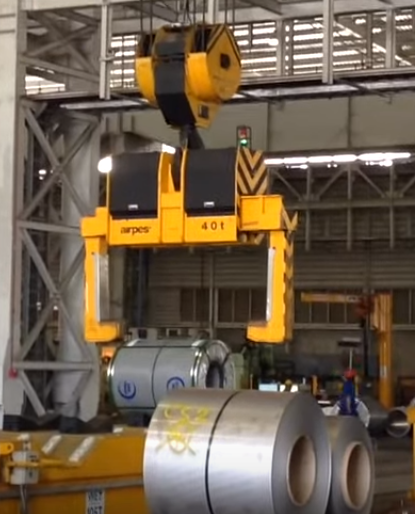
Airpes, a manufacturer of lifting, weighing and below-the-hook equipment, has announced plans to open a backshop that will principally service primary metals, wind and other severe duty applications.
The most demanding of environments where overhead cranes and hoists are installed require the lifting equipment to work in almost continuous duty—to Crane Manufacturers Association of America (CMAA) Class F, for example. For equipment providers, this means products are only one facet of a service offering, at least at the top end of the market.
Tad Dunville, general manager at Airpes Americas, explained that, accordingly, Spain-headquartered Airpes is transitioning to the next stage of a three-phase roadmap in North America.
He said: “We started by securing a formal presence in the U.S., where experienced management was empowered to sell series production lifting tools in the region; we then expanded infrastructure through sales reps and dealers on a national network; and now we are providing a backshop and technical support to our dealer partners for certain issues they don’t or can’t handle, as well as engineered lifting beams for the wind industry with a dual-citizenship technical director. In short, we are providing the most comprehensive support possible for our products anywhere in the USA and Canada.”
Alex Lozano, technical director at Airpes Americas, said: “I spend most of my day supporting wind energy lifting customers and I’m excited to help our EOT [electric overhead traveling] crane customers as well now.”
Airpes recently installed a (CMAA Class F) 40-ton capacity coil grab with rotating bottom block at North American Stainless (NAS), a Kentucky producer of stainless steel. Through Wisconsin-based partner WD Industries (WDI), the lifecycle of the below-the-hook system will be overseen by a manufacturers’ representative agency, with a specialized focus on primary metals, paper, petrochemical, mining, construction, and heavy equipment manufacturing.
Jesse Shively, crane maintenance supervisor at NAS, said: “We prefer the Airpes grab [to other brands] because it is far more substantially built and we are really happy to have a robust local service and support infrastructure to attend to the small details.”
Justin Wieners, business development at WDI, said: “Actually, our contacts at NAS wish the grab was working in an even higher production area, such has been the reliability of the lifter. Having said that, they get peace of mind in knowing that we’re based 45 minutes up the road and have been equipped by the manufacturer to serve as resource, if required. To be able to rebuild grabs at the dealership—having entered the process at the point of consultation—is outside of the norm in terms of mill-duty lifting equipment.”
Dunville said: “It serves as a barometer by which to measure our ongoing expansion in terms of service infrastructure. Yes, we offered the best price, value-added engineering and a very robust design, but WDI’s proximity and ability to back it up will make a huge difference to the partnership going forward. Nobody wants to know how smart we are, they want to know how quickly we can support them. We don’t want to be the bottom feeder—ever. We all know who those guys are, and they’re constantly creating problems for owners with inexpensive components that have no support network.”
Airpes has three principle lines of business, namely pre-engineered weighing and monitoring kits for overhead cranes, including load cells, overload protection, readouts, and data loggers; engineered lifting devices for wind turbine erection; and engineered below-the-hook devices, such as coil grabs, rotating blocks, and magnets.
Dunville added: “It’s a cliché, but in this business, you can’t authentically love what you do, listen to customers, and learn from mistakes, if you don’t have a dealer-only policy that puts the end user first. I acknowledge that we’re not at the finish line yet in terms of our backshop infrastructure, but we’re making great strides. We don’t work with everybody; we’re highly selective about our partners, which is another criteria in effective dealer-led growth strategy. They have to be given the tools to oversee product lifecycle—not only the light lifting—with all the process and repeatability that has to come with it.”
